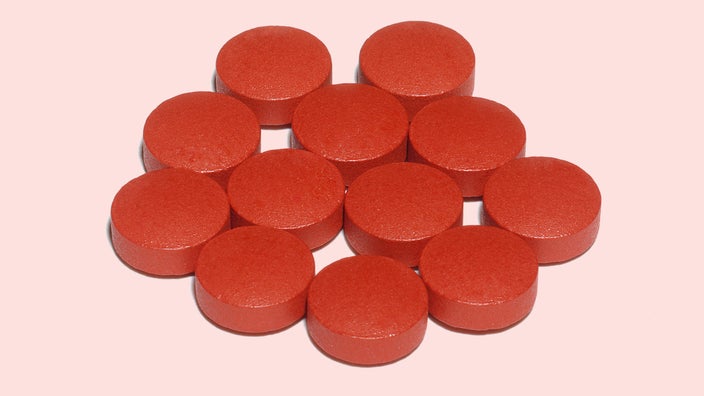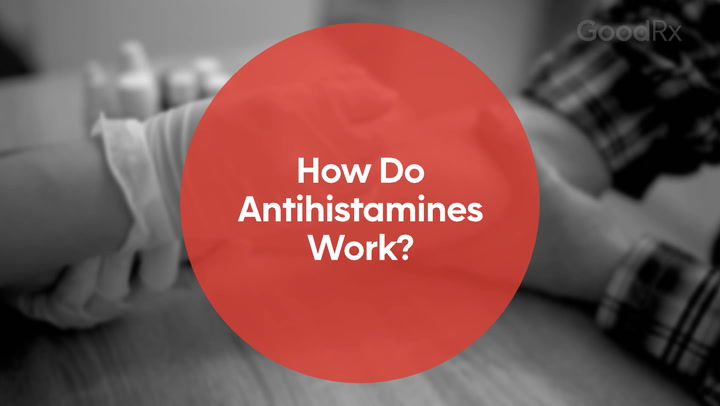
Is Sudafed Addictive?
Key takeaways:
Pseudoephedrine is the active ingredient in Sudafed. It is similar to amphetamine, which is a stimulant.
Risks associated with Sudafed include physical and psychological side effects, as well as possible overdose and addiction. There’s no quick way to get Sudafed out of your system.
There are warning signs that you might be addicted to Sudafed, and treatment options are available.

Sudafed (pseudoephedrine) is an over-the-counter (OTC) medication. It’s a decongestant, and people take it to relieve nasal and sinus congestion. This congestion can be due to allergies or the common cold.
The active ingredient in Sudafed is pseudoephedrine. It can be addictive because it’s similar to the stimulant amphetamine. There’s no quick way to get Sudafed out of your system.
We’ll cover the effects and risks of Sudafed and the signs of toxic levels of Sudafed in the body. We’ll also review signs of possible addiction to Sudafed, alternative medications, and ways to get help for concerns.
Can Sudafed be habit-forming?
Yes, Sudafed can be habit-forming. This is because pseudoephedrine acts like a stimulant on the brain. This means it can increase:
Heart rate
Blood sugar levels
Energy
Blood pressure
Because of its stimulant effects and the fact that it’s readily available, people misuse Sudafed for non-medical reasons as well. People may misuse it to:
Lessen appetite
Raise alertness
Improve athletic performance
Improve concentration
Continue reading to learn the side effects and risks of Sudafed.
Is it OK to take Sudafed every day?
Yes, it is OK to take Sudafed daily, but only over a short period of time. Unless your healthcare provider says otherwise, don't take Sudafed for more than 7 days. This is because you're more likely to experience side effects if you take it for longer.
What are the side effects of Sudafed?
Some of the more common side effects of Sudafed include:
Shakiness or restlessness
Nausea or vomiting
Headache
Contact your healthcare provider right away if any of these side effects are severe or do not go away.
More serious side effects of Sudafed include:
Difficulty sleeping
Dizziness
Difficulty breathing
Nervousness
Stomach pain
Pounding, fast, or irregular heartbeat
If you experience any of these serious side effects, you should get medical attention as soon as possible. If your regular provider can’t see you right away, consider visiting an urgent care or emergency room. This is especially important if you’re experiencing chest pain, shortness of breath, or dizziness.
How long does it take Sudafed to leave your system?
Sudafed can take between 3 and 16 hours to start leaving your system. But it can take anywhere from 15 to 80 hours for the pseudoephedrine in Sudafed to completely leave your system. Many factors play a role in how quickly Sudafed leaves the body.
People with kidney problems need more time to get Sudafed out of their system. But people who make more urine or have naturally more acidic urine can get Sudafed out of their system faster. You can help your body get rid of Sudafed by drinking plenty of fluids so you stay hydrated and make more urine.
What are the risks of misusing Sudafed or other decongestants?
There are other risks associated with decongestants such as Sudafed. These risks are higher if you take them in higher doses.
The first risk is overdose. Here’s the largest recommended daily dose of pseudoephedrine by age:
Adults: 240 mg (4 tablets)
Children ages 6 to 12 years old: 120 mg (2 tablets)
Children ages 2 to 5 years old: 60 mg (1 tablet)
Signs of toxic levels of pseudoephedrine can include:
Depressive effects: sedation, lethargy, coma, and bluish skin
Stimulant effects: insomnia, hallucinations, and tremors
Physical symptoms: ringing in ear, blurred vision, chest pain, sweating, and difficulty urinating
Emotional symptoms: anxiety and euphoria (intense happiness)
These symptoms, particularly any changes in the level of consciousness, can be life-threatening.
Sudafed can also raise blood pressure and cause heart problems. Addiction to pseudoephedrine is another risk of Sudafed.
What are the warning signs of an addiction to Sudafed?
Warning signs of an addiction to Sudafed are similar to those for any other substance use disorder. You may experience:
Cravings for it
Higher tolerance for Sudafed, meaning you’ll need more of the drug to have the same effects over time
Problems in your work or personal life
Difficulty quitting or cutting back on the drug, even though you want to
Withdrawal symptoms when you stop using it
If any of these apply, you may have stimulant use disorder, which is an addiction to stimulants. But there are treatment options that can help. To start, you can seek help from a therapist who specializes in substance use. Nontraditional treatment options are also available.
What’s the link between Sudafed and methamphetamine?
Since Sudafed is readily available, some people use it as a substitute for methamphetamine or amphetamine. Its chemical structure is similar to that of amphetamine. But the effects of Sudafed are slightly weaker than those of amphetamine.
Plus, pseudoephedrine can be used to make methamphetamine, a highly addictive stimulant. This is why Sudafed and other medications that contain pseudoephedrine are available behind the counter. This means there’s a limit to how much of it you can buy each month.
When buying Sudafed, the pharmacist or pharmacy technician will ask you for a form of identification. This is so they can track how much you buy.
What can you take instead of Sudafed?
If you have concerns about the side effects or addictive potential of Sudafed, there are alternatives you can use. These include:
Antihistamines: These can relieve a stuffy nose and are safer for the heart.
Nasal sprays: These provide a localized decongestant rather than one that affects the entire body. This means they target the decongestant specifically to the nose and sinuses. This can have a smaller effect on the brain than Sudafed. It can also have a smaller effect on the heart.
Other remedies: This includes drinking enough fluids and using nasal strips to help you breathe better.
How to get help for a Sudafed addiction
If you’re concerned that you or someone you love might have an addiction to Sudafed, there are a few ways you can get help. The first is to talk with your primary care provider to get a referral to a mental health professional who deals with substance use. You can also use the treatment locator from the Substance Abuse and Mental Health Services Administration.
The bottom line
While most people who take Sudafed do so without significant problems, all medications come with risks. Taking the medication only as directed can help lower health risks and the risk of addiction. And it’s best to talk with your healthcare provider before starting a new medication. If you’re concerned about your or a loved one’s use of Sudafed, help is available.
Why trust our experts?



If you or someone you know struggles with substance use, help is available. Call SAMHSA’s National Helpline at 1-800-662-HELP (4357) to learn about resources in your area.
References
Chua, S. S., et al. (1989). Pharmacokinetics of non-prescription sympathomimetic agents. Biopharmaceutics & Drug Disposition.
Church, M. K., et al. (2013). Pharmacology of antihistamines. Indian Journal of Dermatology.
Głowacka, K., et al. (2021). Pseudoephedrine—Benefits and risks. International Journal of Molecular Sciences.
MedlinePlus. (2018). Pseudoephedrine.
National Alcohol & Drug Knowledgebase. (n.d.). What are the diagnostic criteria for methamphetamine-related mental health disorders?
National Health Service. (n.d.). Pseudoephedrine (including Sudafed).
National Institute on Drug Abuse. (2017). Over-the-counter medicines DrugFacts.
ScienceDirect. (n.d.). Pseudoephedrine.
Was this page helpful?
Related Articles
Browse medications
View AllResearch prescriptions and over-the-counter medications from A to Z, compare drug prices, and start saving.




























